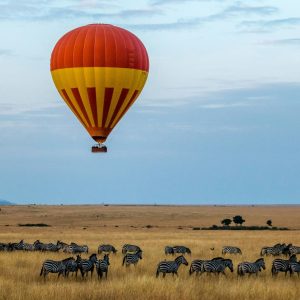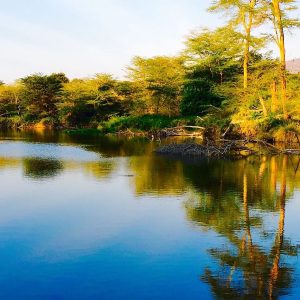Amboseli National Park
Amboseli National Park is one of Kenya’s most iconic safari destinations, renowned for its stunning views of Mount Kilimanjaro, the highest free-standing mountain in the world. Located in the southern part of Kenya, near the border with Tanzania, Amboseli covers an area of about 392 square kilometers and offers a unique blend of diverse landscapes, including vast savannahs, swamps, acacia woodlands, and the dry bed of Lake Amboseli.
Spectacular Views of Mount Kilimanjaro
Amboseli is famous for its breathtaking backdrop of Mount Kilimanjaro, particularly at sunrise and sunset. The snow-capped peak of Africa’s tallest mountain provides a dramatic contrast to the park’s arid landscape, creating some of the most picturesque safari scenes in Africa.
Abundant Wildlife
The park is renowned for its large herds of African elephants, often seen walking in front of Mount Kilimanjaro. Amboseli is considered one of the best places in Africa to observe elephants up close. The park is also home to other wildlife such as lions, leopards, cheetahs, buffalo, giraffes, zebras, wildebeest, hippos, hyenas, and numerous antelope species. The diverse habitats support over 400 species of birds, including flamingos, pelicans, ostriches, and various raptors.
Unique Ecosystems
Despite its relatively small size, Amboseli boasts a range of different ecosystems. These include open plains, marshes, and swamps fed by underground water from Mount Kilimanjaro, creating a year-round water supply for the park’s wildlife. The dry lakebed of Lake Amboseli also offers a dramatic landscape and is a great place for spotting dust devils and photographing animals against the stark, open backdrop.
Cultural Encounters with the Maasai People
The Maasai community lives around Amboseli National Park, and visitors often have opportunities to interact with them. Tourists can visit a Maasai village to learn about their traditional lifestyle, customs, and ceremonies, offering a fascinating insight into one of Kenya’s most famous ethnic groups.
Conservation Efforts
Amboseli is at the forefront of wildlife conservation, particularly for elephants. The park’s elephant population is one of the most well-studied in the world, with ongoing research and protection efforts to ensure their survival. Various organizations, such as the Amboseli Trust for Elephants, work to protect the park’s ecosystem and its inhabitants from threats such as poaching and habitat loss.
Best Time to Visit
The best time to visit Amboseli National Park is during the dry seasons, from June to October and January to February. During these months, the vegetation is sparse, making it easier to spot wildlife. The clear skies also provide unobstructed views of Mount Kilimanjaro. However, the park can be visited year-round, with each season offering unique experiences, such as bird watching during the wet season.
Accessibility
Amboseli is easily accessible by both road and air. It is about a 4-hour drive from Nairobi, Kenya’s capital, or a short flight to the airstrip within the park. The park is often included in multi-day safari itineraries, combining it with other popular Kenyan destinations such as the Masai Mara, Tsavo, or Samburu.
Amboseli National Park is a must-visit destination for nature enthusiasts, photographers, and anyone seeking a classic African safari experience. Its stunning landscapes, abundant wildlife, and cultural richness provide an unforgettable adventure, all set against the awe-inspiring backdrop of Mount Kilimanjaro.
Other Attraction Sites

Masai Mara
Best known for yearly Wildebeest migration, big cats and lots of wildlife

Tsavo West
The park is known for its “Big Five” residents: elephants, lions, leopards, rhinos, and buffalo

Samburu
View the Samburu Special Five: Somali Ostrich, Beisa Oryx, Grevy’s Zebra, Reticulated Giraffe & Generuk

Tsavo East
Largest park with red-soiled elephant herds and maneless lions

Ol Pejeta
The only place in Kenya for you to see Chimpanzee in the Sweetwater Chimpanzee Sanctuary